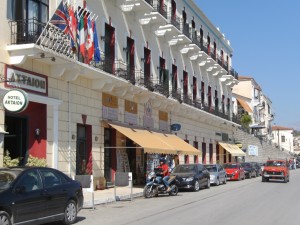 In Germany, enterprises with 100,000 employees or more are nothing extraordinary: BMW, the Federal Labour Agency, Deutsche Bahn AG, Deutsche Rente, Siemens AG, and many more lie beyond the 100,000 employee margin.
In Germany, enterprises with 100,000 employees or more are nothing extraordinary: BMW, the Federal Labour Agency, Deutsche Bahn AG, Deutsche Rente, Siemens AG, and many more lie beyond the 100,000 employee margin.
Now let us do some calculations on leadership structure in a typical enterprise:
Let us assume that each team consists of 10 people. You need a team leader for 10 people. If there are 100,000 people working on level 0 (E0), you need 10,000 people supervising them on level 1. In order to then supervise the 10,000 original supervisors of level E1, you need another 1,000 leadership personalities on level 2.
On level 3 you still need a hundred, on level E4 10, and finally, on level E5, we have the virtual super boss. In theory, you can organize an enterprise with a maximum of 111,111 employees with a hierarchy of 5 leadership levels and a constant team size of ten.
 Integrating the team leaders into the team does not make a difference; it only reduces hierarchy pro forma.
Integrating the team leaders into the team does not make a difference; it only reduces hierarchy pro forma.
Let us further, in theory, remember that you need 30 minutes of leadership work per day and employee. That makes 300 minutes or 5 hours per day, or 25 hours per week. Who is supposed to manage that?
30 minutes is not much, and still it is hard to lead 10 people in a considerate and conscious way. The mental borderline is marked by the magical number seven. In the long run, you cannot manage more.
From the time when I did my military duty with the air force, I remember the following hierarchy: a group leader (E1) was responsible for up to 10 soldiers. Each platoon (E2) had three groups, so the platoon leader commanded three group leaders. The captain (E3) had three platoon leaders and the commander (E4) four captains to lead. I cannot remember the next steps (regiment, division?). The number was always less than seven.
 If you take leadership seriously, then an enterprise of 100,000 employees should have at least six to seven hierarchical levels, maybe more in some organisational units. So how are hierarchies with three to four levels supposed to work out for 100,000 employees and more?
If you take leadership seriously, then an enterprise of 100,000 employees should have at least six to seven hierarchical levels, maybe more in some organisational units. So how are hierarchies with three to four levels supposed to work out for 100,000 employees and more?
In big companies, they try to economize on leadership personalities by using supportive mechanisms and automated processes. Functional employee evaluations, target agreements, and functional spreading of enterprise goals are meant to reduce the need for a leader to an average of 1 on 30. We are just witnessing the results of that error.
I only see two ways: either you rely on leadership (and thereby also on control) in the form of a clear hierarchical organization with sufficient “leadership density”. You would have to include the requirements for an “ethical enterprise”.
 Or else you believe in the big change and the “enterprise 2.0”- era: then you have to abolish all and every hierarchical structure. Abolishing control becomes a strategic goal, because in the new world, control is the biggest risk for the success of an enterprise.
Or else you believe in the big change and the “enterprise 2.0”- era: then you have to abolish all and every hierarchical structure. Abolishing control becomes a strategic goal, because in the new world, control is the biggest risk for the success of an enterprise.
The enterprise 2.0 might eventually serve to complement the “ethical enterprise”. But more than just the big companies are still “light years” away from that stage. So much the more fun would it be for me to create an “ethical enterprise 2.0”. Time might soon be ripe for it.
RMD
(Translated by EG)
P.S.
The pictures were taken on a stroll through Gythio.

